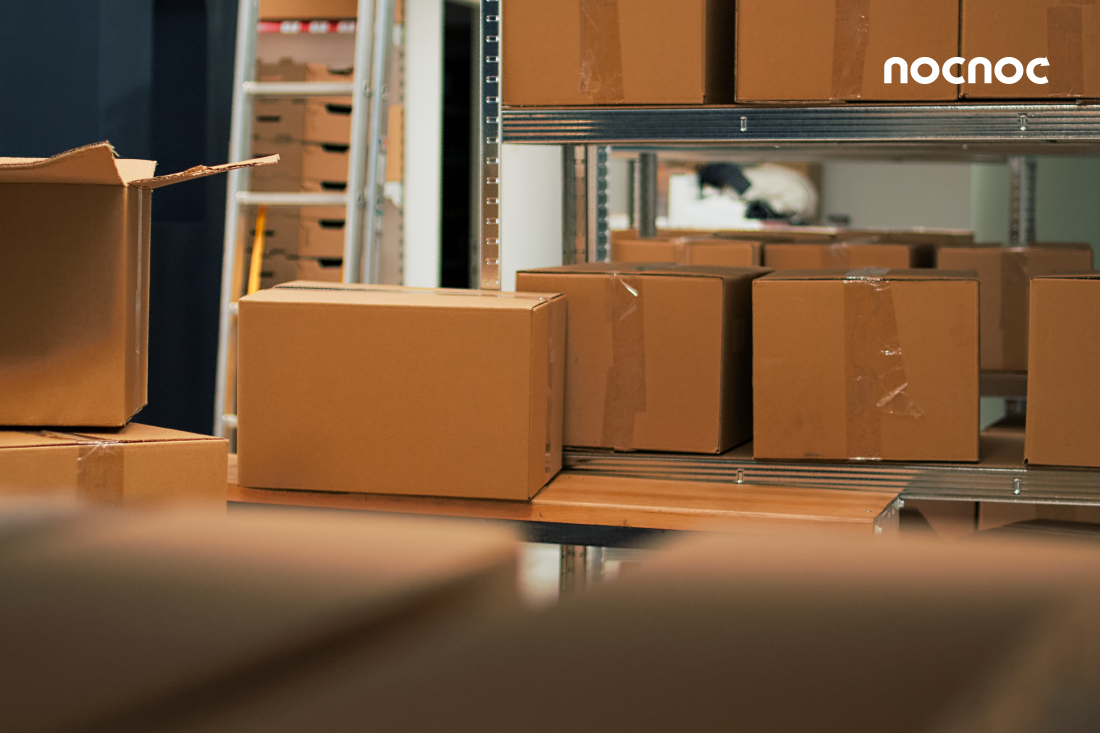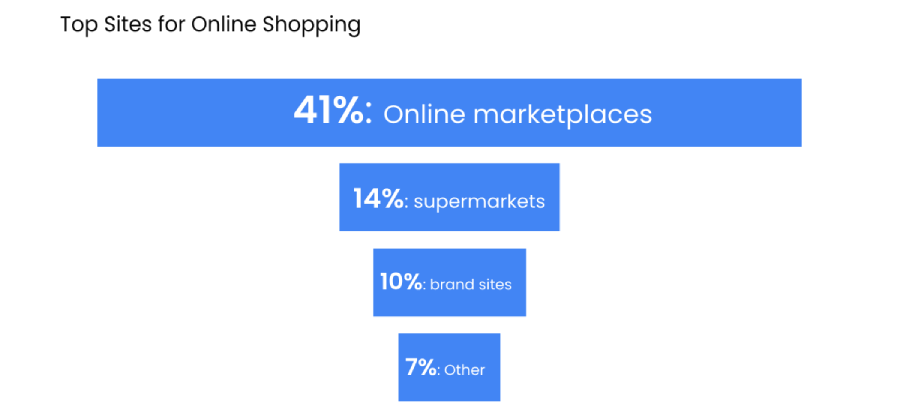Cross-Border e-commerce: Key Insights for 2024

These years have proven to be revolutionary for e-commerce. We saw the rise of social commerce, significant investment in online advertising, AI-driven technology, and cross-border opportunities in new regions. In the United States, new doors have opened in Latin America, democratizing online channels and marketplaces for selling. Amazon extended its presence to Latin America, providing global sellers with the opportunity to list their products on amazon.com.mx and amazon.com.br. However, it’s not the sole player. Marketplaces such as Mercado Libre, VIA Varejo, Carrefour, Magalu, Coppel, and Americanas also show potential for innovation and cross-border opportunities. This article will explore the key trends shaping cross-border e-commerce in 2024. It will provide valuable insights for international sellers looking to initiate or expand their sales in LatAm.
Cross-border opportunities for U.S merchants
US brands and retailers can seize cross-border shopping opportunities in fast-growing regions like Latin America. By offering their products on local platforms, they can charge higher prices and boost their profit margins. The Latin American market currently lacks a variety of US brands, and those that are available often come with hefty price hikes, sometimes reaching up to 200%. This scarcity motivates Latin American consumers to opt for cross-border shopping, seeking better prices and a wider selection.
Latin America e-commerce Landscape for 2024
Latin America is emerging as one of the fastest-growing e-commerce markets globally, expected to maintain double-digit growth annually until 2027. According to projections from AMI, the average growth rate is anticipated to be 22%, with e-commerce sales surpassing $700 billion in 2027. This places Latin America among the select few regions poised for substantial and sustained e-commerce growth.

With a population of 650 million, Latin America sees over 70% of its adult population actively participating in online shopping. This surge is attributed to substantial investments in online advertising and the widespread popularity of social media shopping. According to Portada, retail ad spending is projected to reach US$1.66 billion by 2025. This highlights the significant growth of the online retail landscape.
In 2023, the growth rate for cross-border e-commerce outpaced domestic e-commerce, experiencing an annual increase of 44%. Notably, local marketplaces like Magalu in Brazil and Coppel in Mexico embraced cross-border e-commerce. Even Americanas marketplace, which temporarily paused cross-border operations, resumed them in 2023. The diversity of marketplaces facilitating cross-border transactions presents a strategic opportunity for US merchants to connect with local consumers through various channels.

Unlike the US, where marketplaces make up less than half of e-commerce, Latin America has 78% of total e-commerce sales coming from marketplaces. These platforms play a crucial role in driving e-commerce development in the region. The market is quite competitive and fragmented, with various marketplaces vying against each other, highlighting their importance. The increase in cross-border operations by these marketplaces emphasizes the need for US merchants to develop a strong multi-marketplace strategy in 2024.
Landscape in Brazil for 2024
Brazil is Latin America’s largest market, accounting for more than 50% of total e-commerce sales share.
A considerable number of Brazilian consumers exhibit a keen interest in international brands. More than 68% of online shoppers in Brazil have made purchases from global merchants, with the United States ranking as the top origin country. According to data from NIQ Ebit, over 58% of cross-border shoppers in Brazil are male, and more than 62% fall within the 25 to 49 years age group. The southwest region concentrates 58% of international shoppers.
Brazil’s recently implemented compliance program, ‘Remessa Conforme,’ rolled out on August 1st, 2023. This program introduces clear and new regulations for cross-border e-commerce in Brazil. The primary benefits include a streamlined process for importing and delivering international orders, elimination of counterfeit products, and avoidance of random taxations and inspections at customs. This approach ensures a ‘green light’ at customs, expediting the entire process and significantly reducing the time products spend in customs.
Landscape in Mexico for 2024
Mexico is the second-biggest e-commerce market in Latin America, and along with Brazil, they make up more than 70% of the total e-commerce market. According to eMarketer, in 2023, it became the fifth-fastest-growing e-commerce market globally, with an average growth rate of 16%. Because Mexico is close to the US, a lot of Mexicans enjoy shopping US products. In 2022, 8 out of 10 Mexicans said they bought something from international sellers or companies, and this trend continues in 2023. The US is the top choice for cross-border shopping, as per the International Post Corporation.
Cross-border e-commerce trends for 2024
Colombia, Chile, and Peru on the rise:
While Brazil and Mexico remain key players in cross-border sales, Chile is growing at a rate of 31%, Colombia at 52%, and Peru at 58%, indicating a significant acceleration in their cross-border operations (Beyond Borders, 2023).
Marketplaces remain strong:
Marketplaces continue to be the preferred channel for online shopping. A 2023 survey by Wunderman Thompson showed that more than 40% of consumers consider marketplaces as their favorite platform for online shopping. Physical shopping follows as the second choice, with a 14% preference, trailed by brand websites at 10%, and social media apps at 9% in terms of popularity.

Countries Surveyed: Brazil, Mexico, Colombia, Argentina
Establishing trust is crucial:
Given the prevalence of online scams and fake reviews, brands and sellers need to cultivate a solid reputation both within and outside online marketplaces. Online scams in Brazil surged by 65%, surpassing 200,000 cases, according to data from the Brazilian Public Security Yearbook published in July 2023. In Brazil, having a presence on peer-to-peer platforms like Reclame Aqui can notably enhance confidence among local shoppers.
Influences on Shopping Decisions:
For Latin Americans, price and product descriptions wield the greatest influence on online purchase decisions, as per a 2023 study by Wunderman Thompson. This underscores the significance of offering precise information, titles, and product descriptions on marketplaces, particularly in Portuguese for Brazil and Spanish for the rest of the region.
Social e-commerce is on the rise:
With more than 82% of Latin Americans having purchased through a social media site in 2023. The primary media for online shopping are Facebook and Instagram. Despite TikTok having an estimated 136 million users in Latin America, its shopping solution, TikTok Shop, has not been launched in any Latin American country yet. Even if some brands don’t provide direct shopping on social media, having an account and engaging with local customers is crucial.
The rise of mobile e-commerce:
Smartphone users are poised to constitute the majority of potential e-commerce customers. In 2022, smartphone adoption in Latin America stood at 79%, with projections from Statista indicating an anticipated increase to 93% by 2030.
Flexible payment options:
Online shoppers in Latin America prefer payment options that are simple and flexible. According to PCMI’s 2023 report, credit cards are the primary method, accounting for 48%, followed by Pix at 16%. Notably, installment plans are widely embraced in the region, making up an impressive 60% of all e-commerce payments. In Brazil, this figure rises even higher to 79%. The prevalence of installment plans significantly enhances the purchasing power of Latin Americans, contributing to the rapid growth of e-commerce in the region. Online marketplaces are aligning with this trend by incorporating installment plans into their offerings. They provide various options, such as Pix and Mercado Pago (Mercado Libre’s payment solution), to cater to the diverse preferences of consumers.
Selling in Latin America for 2024
Undoubtedly, Latin America presents a great opportunity for brands and retailers worldwide to expand into new markets and place their products in the hands of consumers who are willing to pay more and even wait for their products if they involve an international sale.
However, expanding into LatAm without the help of a partner who can advise on market complexities, customs regulations, market trends, and more can be very challenging.
At nocnoc, we specialize in helping brands and sellers from the US to expand into LatAm easily. We will list their products in over 15 marketplaces across 5 countries while conducting effective brand awareness campaigns and increasing their sales.

Sign up to nocnoc
If you are looking to boost your sales in Latin America, you can try our solution for free. Sign up here to start.
SUBSCRIBE TO OUR NEWSLETTER
Gain access to the latest news and insights on e-commerce in Latin America.